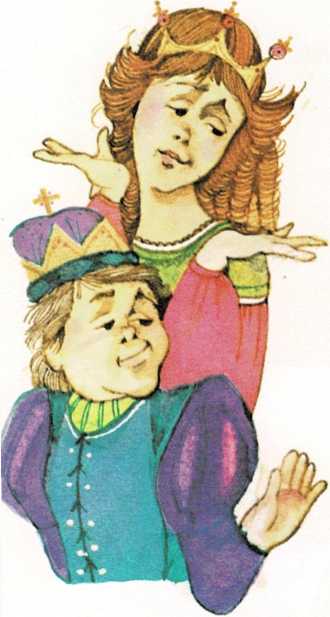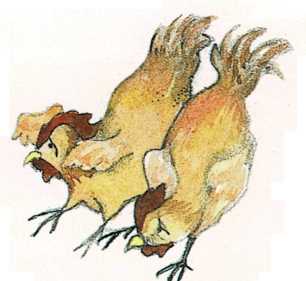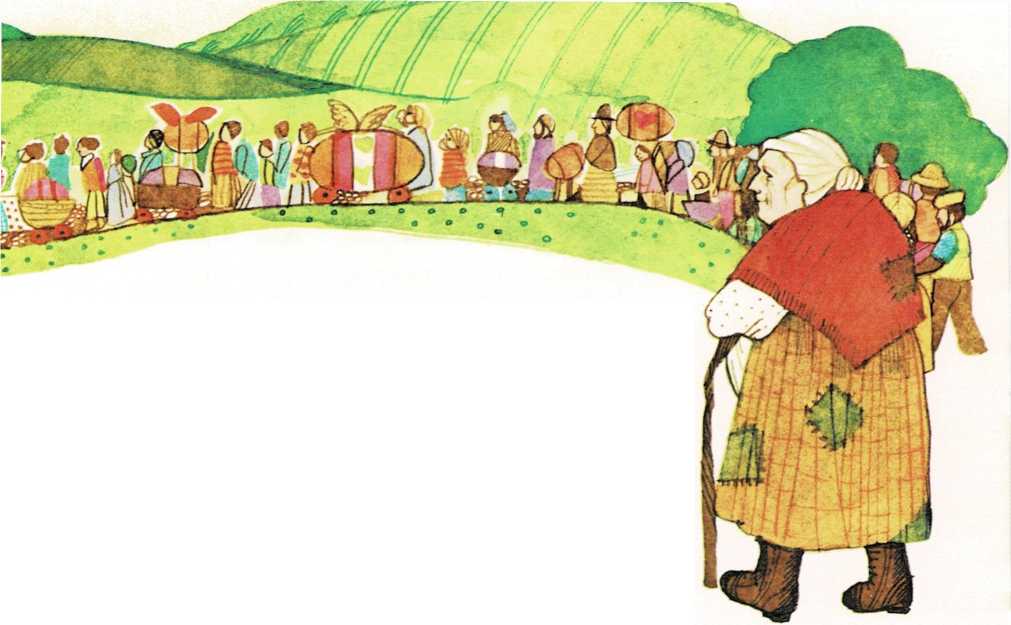
The Sugar Egg
by Carolyn Sherwin Bailey
There was a very important proclamation on the gate of the king’s
palace, and this was what it said:
\”The king wishes a new and different kind of Easter egg for the prince
and the princess. It must be brought to the palace on Easter Eve, and
there will be a prize for it if it pleases their royal highnesses. If it
is like all the former Easter eggs, the subject who brings it will be
banished.”
Now whoever heard of anything so absurd? Everyone in the kingdom, down
to the most humble subject, knew their royal highnesses, the Prince
Particular and the Princess Perhaps. Not that those were their real
names, but whenever the prince was asked if he liked a new toy or game,
he would say, \”Oh, not particularly,” and then he would turn up his
nose.
And if you asked the princess if she would like to play something quite
merry, she was very apt to say, \”Oh, perhaps,” with a toss of her head,
which meant that she did not care whether she did or not.
Of course, every Easter in the past, their royal highnesses had hunted
for colored eggs on the palace grounds, and had large chocolate eggs
made for them in the palace kitchen, and eaten the pheasants’ eggs for
breakfast on Easter Day. How, in the entire
kingdom, would it be possible to hatch a new and different egg for them?
It could not be done. All the hens hung their heads in despair, and all
the farmers expected to be banished from the kingdom on Easter Monday.


But it was not a place of giving up, and in spite of their being so hard
to please, their subjects loved the Prince Particular and the Princess
Perhaps. So whoever read that strange proclamation on the palace gate
went home with the wish to find just the kind of Easter egg for which
the king had asked. And a great many people went to work trying to make
one.
It was funny, though, the way in which they went about it.
There was the baker. He decided to put several dozen eggs into a huge,
egg-shaped cake, so he whisked them up as light as foam, mixed them with
flour and other good things, and made a great cake which he frosted with
white to look like the biggest egg ever made. On top he put the royal
crest in yellow icing. But what a very indigestible Easter egg this /
one was! i //
And there was the toy man. He made a \ //
mammoth egg-shaped toy dirigible of white \t/ rubber, and large enough
for their royal \
highnesses to take a short trip over the palace \ J&.

treetops and as far as the sea. It was just like a giant egg, but so
costly and made with such pains that the toy man had to neglect carving
the little wooden dolls and animals which the peasant boys and girls
loved so much to buy at his shop.
There also was the jewel cutter. He cut two clear, white diamonds in the
shape of tiny eggs, one for the prince to wear as a pin in his scarf,
and the other for the princess to hang on a golden chain about her neck.
But they only sparkled and sent out darts of light; to touch, they were
as cold as the winter that had just passed.
So on Easter Eve there was a crowd of the king’s subjects at the
entrance to the palace, each with his or her odd Easter egg. They were
carved of wood, and shaped of gold and silver, painted in all the colors
of the rainbow, and some of them so large that they had to be drawn in
carts up to the gates.
And on the edge of the crowd came Mother Joy, who lived all alone in a
tiny cottage on the border of the forest. She had very little

smiled an odd smile and hid something in her
comfort of her own, but all the children knew and loved her. Such barley
sugar candy sticks as Mother Joy made for them, and she could show them
the first young magpies, the first cowslips, and where the fresh cress
grew in the brook! But, in spite of this, it was strange that Mother Joy
should be here at the gate of the palace on Easter Eve, so poor, and so
old. And when people spoke of it, Mother Joy only apron.
So all the new and different eggs were taken into the palace throne room
to be judged, while the subjects waited outside. But the egg balloon had
to be tied to the palace chimney, and everyone was sure that it would
take the prize. They waited and waited. Then, suddenly, there came the
sound of their royal highnesses laughing more merrily than they ever had
before, and everyone was called in to see the prizegiving.
Such a surprise! On a purple velvet pillow in the lap of the king, the
prince and princess and all the court crowded around it, was a little
hollow sugar egg. It had a piece of glass fitted in the end like a fairy
window, and inside, made of scraps of colored tissue paper and lace and
grasses, there was a wee house, a green

meadow with flowers and children at play in it. Spring, as it comes in
the country, was there inside the little sugar egg, seen through the
fairy window in the end.
\”The prizewinning egg!” cried the king, holding up the sugar egg.
\”Their royal highnesses have never been so happy in their lives with
any Easter egg before. They want to go right out into the fields and
play. Riches and a coronet for the maker!”
And Mother Joy in her apron came up to the throne, for she had known
what to bring to the palace on Easter Eve; that little picture of
spring, with a fairy window to see it through.
It happened that all the eggs won prizes of one sort and another. But
the best of all was the little sugar egg. They became the fashion in the
kingdom, and we have had them ever since.

